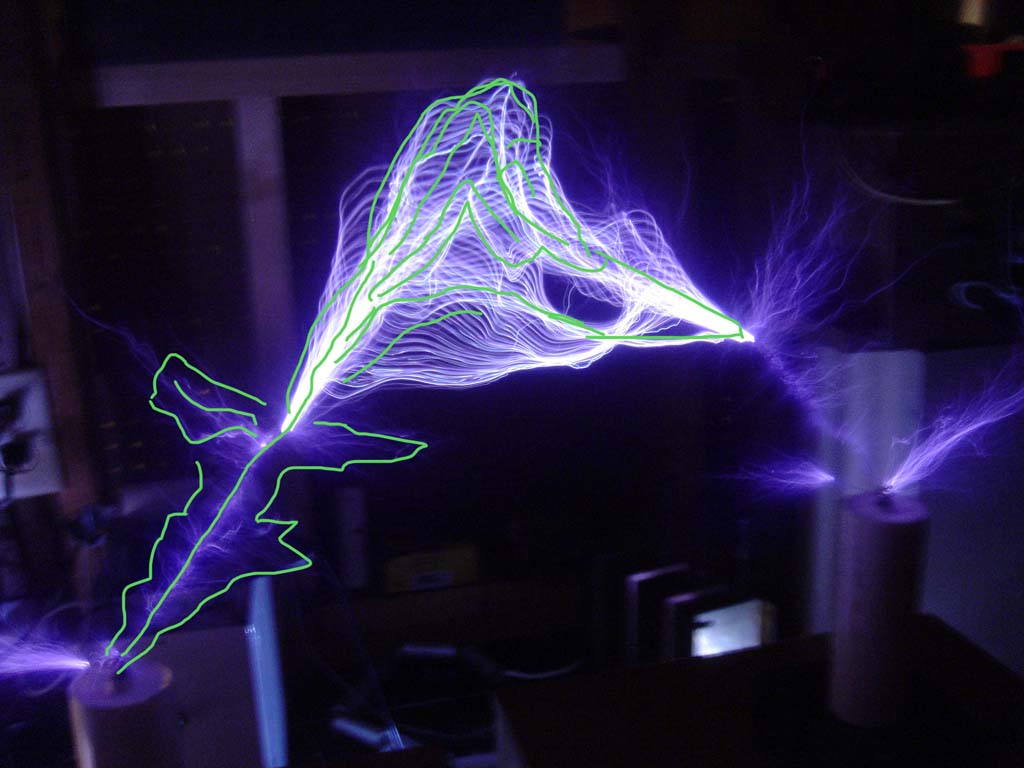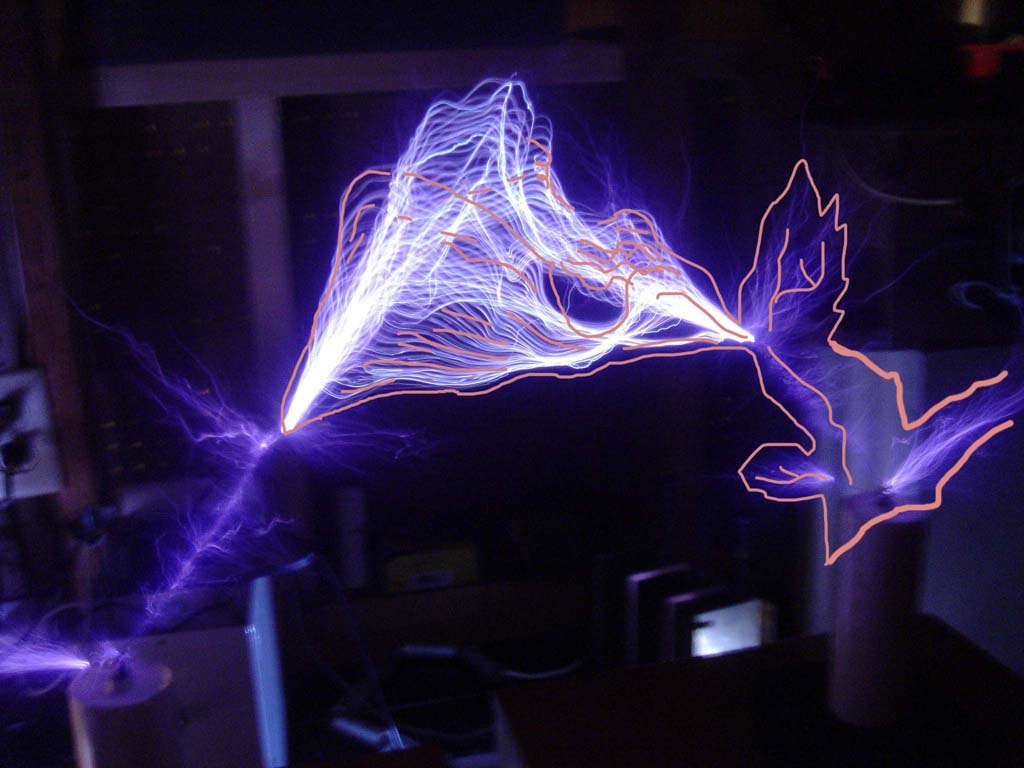| Unipolar
10" Pancake Coil Tests These two identical units were made as a study of operating Pancake Coils with higher voltages and simple components. The power transformers are 5,000V 120mA Cold Cathode lighting transformers made from Franceformer. The capacitors are an MMC made from individual 1000VDC .22mfd caps - 10 in series for .022mfd at 10KVDC. The spark gap is a simple design using 1/4" tungsten rods press fit into brass drawer knobs. The Pancake Coil was made with paper interleaves (dry-wall seam paper soaked in Boiled Linseed Oil). There are approx. 150 turns of 26 AWG magnet wire in a flat spiral. This was placed in a 10" silicone baking pan and was filled with a mixture of paraffin canning wax and soy wax from a local craft store. Stearic Acid was added to prevent cracking. The primary coil was 2 1/2 turns of Romex cable with its 3 solid wires in parallel. The unit consumes 1/2 kW (500 watts) and produces an 8 - 10" spark. This is an excellent coil for someone to make that is interested in Pancake Coils and already builds Tesla Coils and has a supply of goodies on hand. I also tested this unit with a 15kV 60mA transformer, but the extra voltage lower current proves only to strain the insulation and the discharge is not as impressive in quality or quantity. A smaller transformer 6kV at 30mA or 60mA would probably work nicely. Click here for a movie of the coil in operation! One unit in progress and the other unit finished. Both have their 3-series spark gaps mounted. Some smoked acrylic is used for the covers. The boxes are made simply from pine and MDF fibre. The brush discharges have the unusual property of being highly energetic even when the path is completed. The discharge terminal seen to the left is connected to the outermost turn of the Pancake and the innermost turn of the Primary Coil, as well as one leg of the condenser. The condensers are mounted in a 3/4" PVC pipe with simple binding posts on the ends. They are mounted to the box with standard plastic "U" shaped mounts for conduit. Not exactly museum quality, but a functioning test of a concept... General appearance of the unit. The black wires seen connect to the transformer. A top view. The brass discharges can swing around in all directions. Note the curious brush discharges. Normally the heavier discharges at the left would remove this effect. The spark gap works fine and operates nicely compared to the photo. The acrylic was smoked but not tinted very dark. Not exactly a therapeutic discharge. Normally arcs to metal held in the hand result in sparks going through your shoes to the concrete floor. If you stand on an insulated platform though it isn't so bad and there some strong electrostatic effects on the body depending on how far the metal is from the actual terminal. At 5 or 6" your hair starts vibrating up and down. The adjustable discharger to the right is 1/8" brass tapped for the ball (a lamp finial part from Home Depot) and an wire terminal from a Faradic battery. I omitted any form of live adjustments and these sparks are not friendly to the skin... An interesting test was performed with two coils operating with the same values of components but no inner-connections between the two. What appears at first to be bipolar discharge is in reality a single discharge from each terminal to the other - the opposite terminal acting more like a ground than a separate circuit. There is little interaction between the two coils. The discharge was 9" in a straight line between the wires..
|

